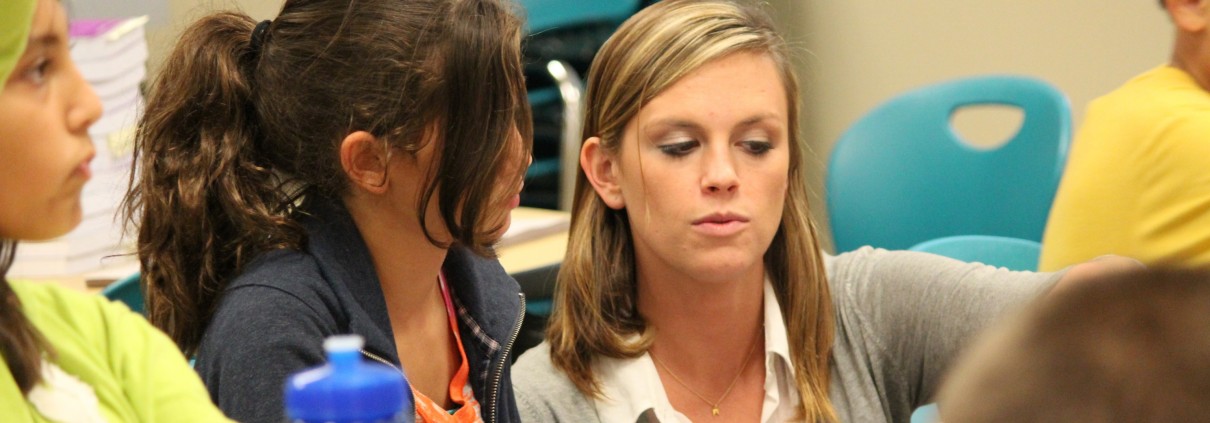Understanding Your Child – Individualization “Behind the Scenes”
Most private schools are focused on either “academics” or “personal development”. That forces parents to choose only one type of education for their children. The academic-only schools push children to learn the same public school curriculum at an accelerated pace with the promise of smaller class sizes. Those schools are not mindful of the important emotional and psychological growth of their students, which we know is a critical factor in life-long success. The schools that focus on the personal development of children with nurturing, supportive environments that encourage exploration and curiosity, do not prioritize academics.
 At LePort we combined the best of both and are excited to offer parents a school that will give their child a truly well-rounded education. Our unique programs are designed to give students a rich, intellectually demanding academic experience (based on our own advanced curriculum) – in a child-centered environment that encourages a healthy curiosity, a love of learning, and an overall emotional wellbeing. Now, in our fourteenth year of existence – with eight thriving schools and a current enrollment of over 900 students – our dream of “getting education right” is a successful reality. As a result, LePort Schools look and operate very differently from everything else out there.
At LePort we combined the best of both and are excited to offer parents a school that will give their child a truly well-rounded education. Our unique programs are designed to give students a rich, intellectually demanding academic experience (based on our own advanced curriculum) – in a child-centered environment that encourages a healthy curiosity, a love of learning, and an overall emotional wellbeing. Now, in our fourteenth year of existence – with eight thriving schools and a current enrollment of over 900 students – our dream of “getting education right” is a successful reality. As a result, LePort Schools look and operate very differently from everything else out there.
One key aspect of our programs is the extent to which we individualize our entire approach based on the needs of every unique student. Parents, seeing this, sometimes ask how we seem to know their child so well. The answer is: a lot of work!
To offer you a glimpse of that work, here is a general tour of what we do in our upper elementary and junior high programs to understand and cater to individual student needs, followed by an example of that approach in action.
A General Tour
How do we get to know your child?
 It starts before our school year even begins. Every August, we have an all-teacher meeting during which we go over our entire student body, focusing especially on students who might need accommodations, whether remedial work, enrichment, social-emotional development. We have this meeting so teachers can begin their classes with a big picture understanding of the children with whom they will be working so closely. This helps us to start the year off right, to create a caring, supportive learning environment for each and every unique child, from day one.
It starts before our school year even begins. Every August, we have an all-teacher meeting during which we go over our entire student body, focusing especially on students who might need accommodations, whether remedial work, enrichment, social-emotional development. We have this meeting so teachers can begin their classes with a big picture understanding of the children with whom they will be working so closely. This helps us to start the year off right, to create a caring, supportive learning environment for each and every unique child, from day one.
- This is followed by intensive monitoring right out of the gate. Over the first month of school we work as a team to gather and discuss our experiences with each new and returning student, making a full assessment of every child. We identify where each child can improve (whether struggling or bored), what strategies seem to work or fail for his/her personality, and where more assistance or enrichment might be needed. We then communicate with you, the parents, to gain insight and offer updates where fitting.
 Our classrooms have a maximum size of 16 students, and teachers have manageable course loads (approximately 15 hours of class time a week, as compared to 25+ in other schools). This allows teachers a lot of time to study their students and really understand each child’s motivations. They also have time to follow up on important “little things” that matter to students, discuss and collaborate with colleagues, communicate with parents, and find solutions that help address concerns and challenges.
Our classrooms have a maximum size of 16 students, and teachers have manageable course loads (approximately 15 hours of class time a week, as compared to 25+ in other schools). This allows teachers a lot of time to study their students and really understand each child’s motivations. They also have time to follow up on important “little things” that matter to students, discuss and collaborate with colleagues, communicate with parents, and find solutions that help address concerns and challenges.
- Each campus has a central team of experts that oversees student development on an ongoing basis. Select teachers at each campus form this “Student Issues team”, which actively collects information from the rest of the staff and meets weekly to discuss at length the few students who need to be more closely observed for concerns in and/or out of the classroom. The insights and suggestions of the student issues experts take into account the entire student body (including dynamics that a single teacher may miss) and are offered daily to the entire staff.
- To properly investigate every issue and ensure strong internal two-way communication, we have lots of collaborated meetings.
- For the whole school year, every Monday, Wednesday and Friday before school starts our entire staff has a brief meeting with the teachers to discuss immediate, relevant academic and social issues on hand.
- Our teachers meet regularly with the Head of School and teachers in other departments (math, language arts, history, science) to strategize about particular concerns, challenges and opportunities.
- In addition to formal conferences and meetings, we have phone and email conversations with parents to ensure that we are seeing the whole picture, and that school and home are aligned.
This individualized attention is purposefully given so we can know our students, and make sure they are appropriately challenged and happily engaged academically as well as thriving personally and socially.
Now on to an example of what all of this work looks like in practice.
An Example of LePort’s Approach to Individualization
(Names of students and staff have been changed to protect their privacy.)
One day in 5th-grade math, Alex flicks another student’s ear. Ms. Smith, his math teacher, sees this occur. In some schools such behavior is the norm, the minor that goes unquestioned, the poor choice that is overlooked. Not at LePort.
The next period is recess. Ms. Smith has Alex stay back instead of going outside to play. Not because ear flicking itself is a serious concern, but because she has learned that the “small things” can at times be significant. Ms. Smith asks Alex why he did it. In frustration, but with sincerity, Alex responds that he doesn’t know. “He [the other student] just really bothers me, I guess.” For now Ms. Smith leaves it at that, but asks Alex to take a few minutes to think about why he flicked Michael’s ear.
During her break an hour later, Ms. Smith writes the occurrence to the Student Issues (SI) team. SI is made up of teachers, and in this case one of them (Alex’s history teacher) notes that similar incidents with Alex have also occurred in his class. So it’s a trend. The team decides to take a look at notes Alex’s mom had made upon enrolling at LePort. It looks like at his previous school, Alex had occasional conflicts with a couple of boys there too. Mrs. Chang, LePort’s Head of School and a member of SI, then pulls up past LePort email threads relating to Alex, and gathers relevant information from all teachers on campus.
Fast forward to end of day. Ms. Smith receives a call from Mrs. Chang, who offers her experienced and well thought-out feedback, tips, and suggestions. Now Ms. Smith can intelligently decide on a plan of action for tomorrow.
Tomorrow comes, and Ms. Smith heads to Alex’s homeroom to chat with him. Because she didn’t hastily confront Alex in the moment the day before – when his emotions were running high – she can now have a calm, constructive conversation with him. Alone, just the two of them, Alex opens up, saying that a few of the boys can be annoying at times, “acting all arrogant whenever they get an answer correct.” But he also notes, “I’m pretty competitive, and it makes me angry inside when others always get questions right …but I never do” – he says with visible tears in his eyes. At this point, the conversation naturally moves away from his peers to what is truly at root: his academic anxiety. After a few moments, Alex reveals that he is always comparing himself to others and never feels “good enough”. For, underneath it all, Alex believes he is stupid.
From here, the path is clear for Alex to work on truly understanding his underlying emotions and what drives him to make poor choices, which if gone unrecognized or considered unimportant, could have grown into further academic anxiety and poor behavior for years to come.
Now this process – i.e., Alex’s personal growth – will not occur overnight. As adults, we all know real change takes time. But here at LePort, because we are experienced educators who care about each unique child as an individual, we make the time.
————–
 That’s a quick tour of some of the general and specific “behind the scenes” work in our upper elementary/junior high division. We deeply care about the individualized work that makes a huge impact on understanding your child, and, even more importantly, in his understanding himself – a precondition to success in the unique adventure he will confidently create of his life.
That’s a quick tour of some of the general and specific “behind the scenes” work in our upper elementary/junior high division. We deeply care about the individualized work that makes a huge impact on understanding your child, and, even more importantly, in his understanding himself – a precondition to success in the unique adventure he will confidently create of his life.





